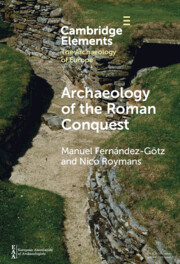The northern regions of the Iberian Peninsula have traditionally been excluded in international debates on Iron Age urbanisation. However, the hillforts and oppida of the Cantabrian area show considerable similarities to the situation found in wide parts of Temperate Europe during the 1st millennium bc. One of the most important centres is the oppidum of Monte Bernorio, which was occupied between the Late Bronze Age and the Roman Conquest. This paper offers a first overview of the archaeological fieldwork carried out over the last decade, which has revealed the existence of an extremely complex and extensive system of multivallate fortifications enclosing an area of about 90 ha. Therefore, it is one of the largest Iron Age fortified sites of the whole of the Iberian Peninsula. The material culture recovered at the settlement – including large amounts of pottery, animal remains, metal objects, and glass beads – testifies both local production and long-distance networks. Moreover, the recovery of a tessera hospitalis with written text constitutes a prime example of the existence of legally sanctioned ‘citizenship rights’ among the pre-Roman communities of the Cantabrian area. Finally, recent discoveries at the oppidum itself and at the nearby Roman military camp of El Castillejo indicate a siege and conquest by the Roman army in the course of the Cantabrian Wars led by Emperor Augustus in the 20s BC. The evidence points towards the existence of one of the major battlefields of Rome’s imperial expansion in the West.
